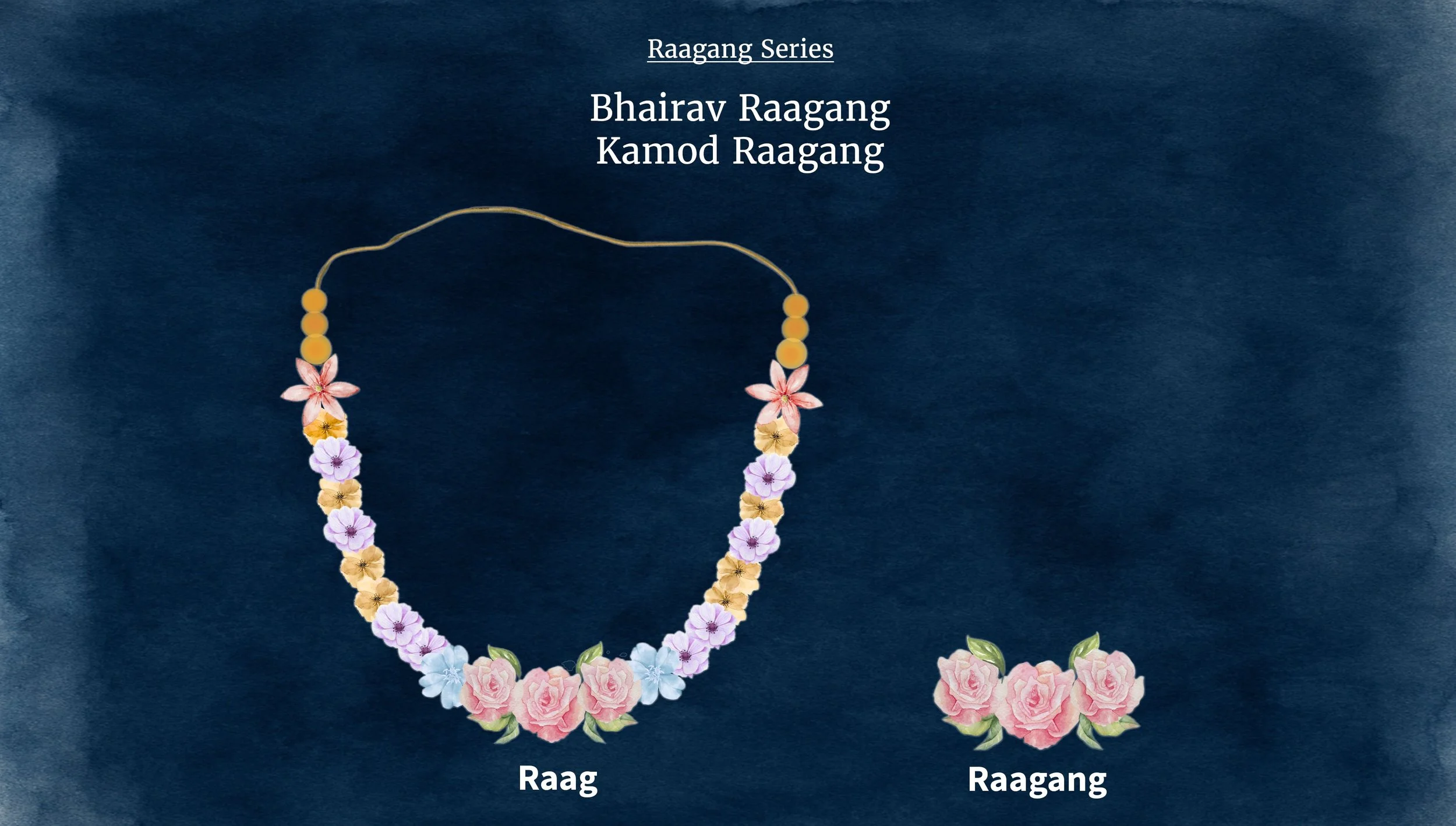Raagang Part I - Bhairav, Kamod
A raag is said to have a Raagang of another raag when a signature phrase from the latter appears in it. In the early 20th century, Pandit N. M. Khare identified thirty raags with signature phrases that frequently appear in other raags. It helps recognize how different raags are connected through shared melodic phrases.
The video below demonstrates the Bhairav and Kamod Raagangs as they appear in several well-known raags.
What is a Raagang?
The term Raagang combines Raag and ang (component in Sanskrit). When one raag regularly uses a phrase that belongs to another, it is said to carry that raag’s ang. You can think of it like a familiar facial feature that makes someone instantly recognizable.
Musicologists have developed different systems to classify raags. Pandit Vishnu Narayan Bhatkhande, developed a well-known classification framework of ten thaats based on the notes present in raags. Around the same time, Pandit N. M. Khare, a disciple of Pandit Vishnu Digambar Paluskar, introduced another practical approach. He identified around 30 raags with unique, signature phrases — these became known as the Raagang raags. Other raags that share those characteristic phrases are said to carry that Raagang.
A raagang is not the same as thaat. Both thaats and raagangs are sometimes named after the same janak (parent) raag such as Bhairav and Kalyan because many raags are derived from these janak raags.
Bhairav Raagang
The Bhairav Raagang is defined by the phrase G M R S, seen across members of the Bhairav family, including Raags Bhairav, Ramkali, and Ahir Bhairav, as demonstrated in the above video.
Kamod Raagang
Kamod is a Raagang raag belonging to the Kalyan thaat.
It shares some Kalyan-ang features but also has its own distinct phrases that recur in other raags, earning it Raagang status.
The Kamod Raagang is defined by the phrase G M R S, seen in many raags such as Kamod, Chhayanat, Hameer, and Shyam Kalyan, as demonstrated in the above video.
Importance of Raagangs
Many raags share the same notes yet sound different because of their distinctive phrases. Raagangs give students a clear way to recognize these differences by ear. Knowing Raagangs becomes especially useful when understanding samprakritik raags (closely related raags), as it helps both performers and listeners tell them apart in practice and in performance.
Related Topics: Bhairav, Ahir Bhairav, Ramkali, Kamod, Chhayanat, Hameer, Shyam Kalyan, Yaman


